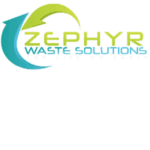ISO 45001 Occupational Health and Safety Management Systems
Achieve Excellence with ISO 45001 Occupational Health and Safety Management Systems (OHSMS)
Table of Content
What is ISO 45001:2018 Certification?
ISO 45001:2018 is the international standard for Occupational Health and Safety Management Systems (OHSMS). It provides a framework for organizations to proactively manage health and safety risks, prevent work-related injuries and illnesses, and create a safer work environment. ISO 45001:2018 applies to organizations of all sizes and industries, helping them improve employee well-being and demonstrate compliance with health and safety regulations.
Why is ISO 45001:2018 Certification Important?
ISO 45001:2018 Certification is essential for organizations that prioritize the health and safety of their workforce. Key reasons include:
- Reduced Workplace Incidents:Minimize work-related injuries, illnesses, and accidents.
- Regulatory Compliance:Ensure compliance with occupational health and safety laws.
- Improved Employee Morale:Show commitment to employee well-being and workplace safety.
- Risk Mitigation:Identify and control potential hazards effectively.
- Enhanced Reputation:Demonstrate leadership in health and safety practices to clients and stakeholders.
By implementing ISO 45001:2018, organizations foster a culture of safety, protect their workforce, and boost operational efficiency.
How to Achieve ISO 45001:2018 Certification
Achieving ISO 45001:2018 Certification involves a structured approach:
- Gap Analysis: Assess your current health and safety practices against ISO 45001:2018 requirements.
- Planning and Documentation: Develop an OHSMS, including policies, objectives, and procedures.
- Implementation: Deploy the OHSMS across all levels of the organization.
- Internal Audit: Conduct internal audits to evaluate the effectiveness of the OHSMS.
- Certification Audit: Undergo a two-stage audit process:
- Stage 1: Review of documentation and readiness assessment.
- Stage 2: On-site audit to verify implementation and compliance.
- Certification: Receive ISO 45001:2018 Certification upon successful audit completion.
Certification Process
Application and Contract
Optional Pre-Assessment
Stage 1 Audit
Stage 2 Audit
Key Benefits of ISO 45001:2018 Certification
1. Improved Workplace Safety:
Proactively reduce risks and prevent accidents.
2. Regulatory Compliance:
Meet health and safety laws and industry-specific requirements.
3. Reduced Costs:
Lower costs associated with workplace incidents, insurance premiums, and downtime.
4. Enhanced Employee Productivity:
Create a safer work environment that improves employee morale and efficiency.
5. Reputation Boost:
Demonstrate a strong commitment to health and safety, enhancing your brand image.
6. Risk Management:
Identify and control hazards before they escalate into incidents.
7. Global Recognition:
ISO 45001:2018 is an internationally recognized standard, improving credibility with clients and partners.
Maintaining Your ISO 45001:2018 Certification
ISO 45001:2018 Certification requires ongoing commitment to workplace safety. To maintain certification, organizations must:
- Conduct Regular Internal Audits: Continuously assess OHSMS performance and compliance.
- Management Reviews: Evaluate health and safety objectives and performance with top management.
- Ongoing Improvement: Address non-conformities, improve processes, and prevent future risks.
- Surveillance Audits: Certification bodies conduct periodic audits to ensure continued compliance with ISO 45001:2018.
How Global CB Can Simplify Your Certification Journey
At Global CB, we make achieving ISO 45001:2018 Certification simple and efficient by offering:
Expert Consultation
Expert Consultation
Customized Solutions
Customized Solutions
End-to-End Support
End-to-End Support
Cost-Effective Process
Cost-Effective Process
Accredited Certification
Accredited Certification
Partner with Global CB to create a safer workplace and achieve ISO 45001:2018 Certification seamlessly.
ISO 45001 Certification FAQs
Any organization, regardless of size or industry, can implement ISO 45001 and achieve certification.
The timeline varies based on organizational size and readiness but typically takes 3-6 months.
ISO 45001 replaces OHSAS 18001, with a stronger focus on proactive risk management and worker participation.
While not mandatory, it is highly recommended for organizations prioritizing workplace health and safety.
Costs depend on organizational size, complexity, and the scope of your OHSMS.



























